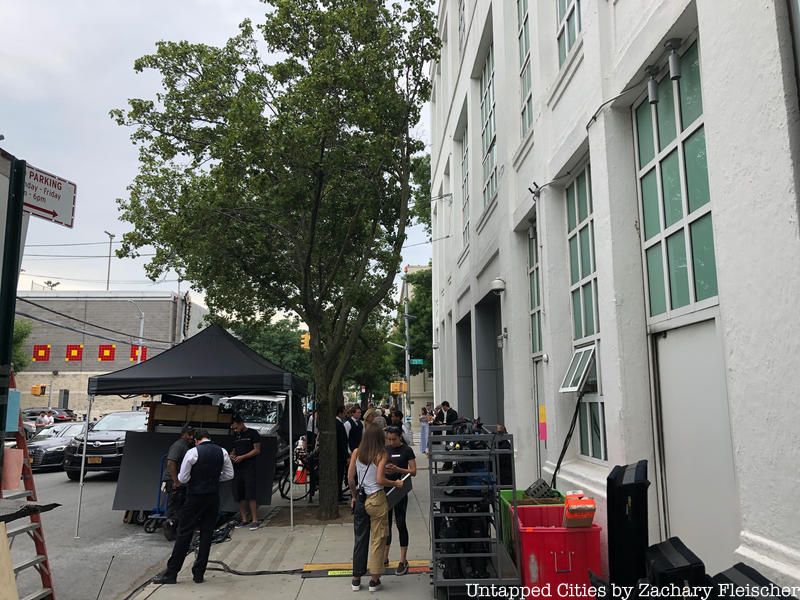Last-Minute NYC Holiday Gift Guide 🎁
We’ve created a holiday gift guide with presents for the intrepid New Yorker that should arrive just in time—


New York City has always been a hotbed for high profile Hollywood film shoots, so much so that we’ve devoted a whole series to detailing the enormous amount of film locations that pop up around the five boroughs. What may come as a surprise to many New Yorkers is that behind the already historic Kaufman Astoria Studios in Queens is the city’s only studio backlot. And while studio backlot real estate continues to diminish in Hollywood, the already enormous Queens backlot is expected to expand over the next two years. Here’s an overview of Kaufman Astoria Studio’s new studio backlot and the future of film in NYC.
Astoria Studio’s new backlot was officially opened on December 3, 2013 and boasts a total of 34,800 square feet of space. The backlot required the acquisition of an entire block on 36th street in Astoria, Queens to accommodate a gate for the new space. Along with the new backlot, the entire studio also hosts a total of seven stages including the largest stage outside of Los Angeles. The studio’s recent filmography includes Orange is the New Black, the satirical Onion News series, Nurse Jackie, and the enormously high budget production for Men in Black 3. Couple this recent resurgence in production activity with Kaufman’s new open air back lot, and Queens seems prepared to give Hollywood another run for their money. The new backlot even served as the location for an eight weekend long flea market.

Kaufman Astoria Studios had not always been a consistent hive of activity though. In fact, it was not even always called Kaufman Astoria Studios. Originally known as Astoria Studios, the facility was built in 1920 by Famous Players Lasky to accommodate the Broadway theater district in Manhattan. Many iconic films, from the first two Marx Brothers movies to Hair and Goodfellas on up, were all filmed at the studio over the years. In a way, the studio played a significant part in a much larger motion picture scene that at one time rivaled Hollywood itself. The facility was also known as Paramount Studios up until the company moved its operations to California in 1932.

In spite of the studio’s prominence, there was one point where Kaufman Astoria was at risk of extinction. The catalyst for the studio’s near demise began during World War II, when it was taken over by the U.S. Signal Corps to become the Army Pictorial Center. This was followed by a period of disuse wherein the U.S. Army turned the studio over to the Federal Government after declaring it “surplus property”.
Luckily, leasing over the studio for the production of Thieves and The Next Man saved the studio in 1975 and by the next year, Astoria Studios was declared a National Historic Landmark. The name “Kaufman” was added to the title of the studio in honor of the developer George S. Kaufman, who helped expand and revive the studio in the 1980’s.

Including New York’s sole open air backlot at Kaufman Astoria Studios is just one of many steps the city has made recently to help revive New York’s film production muscle. Anybody who has been in the New York transit system lately will certainly recognize the “Made in NYC” tag that is on many advertisements promoting the production of movies in the five boroughs. This campaign is meant to increase the visibility of New York’s film production, which currently generates an annual income of $7 million and provides New Yorkers with 130,000 jobs. This was aided in no small part by Mayor John V. Lindsay, who in 1966 made it possible to shoot on any City-owned property with a single permit and barred City officials from the censoring any of the film’s content.

To add to the momentum of film production in NYC, Kaufman Astoria plans on expanding their already enormous backlot by another 18,000 sq. ft. This $20 million expansion project is called Stage N and is expected to be completed by 2016. According to Kaufman Astoria Studios President Hal Rosenbluth, their plans to expand the studio is one of many efforts to try “to really grow the studio and the whole neighborhood.” Talking to the Daily News, Rosenbluth considers Kaufman Astoria “the granddaddy of all the facilities” and that “We’re just trying to provide the facilities that make [producers] want to come to New York and keep doing that.”

To find out more about film production in NYC, check out our series about New York City film locations, including our latest post about the film locations for Sharknado 2. Also, be sure to check out our articles about the Museum of the Moving Image, close to the Studios.
Get in touch with the author @DouglasCapraro
Subscribe to our newsletter